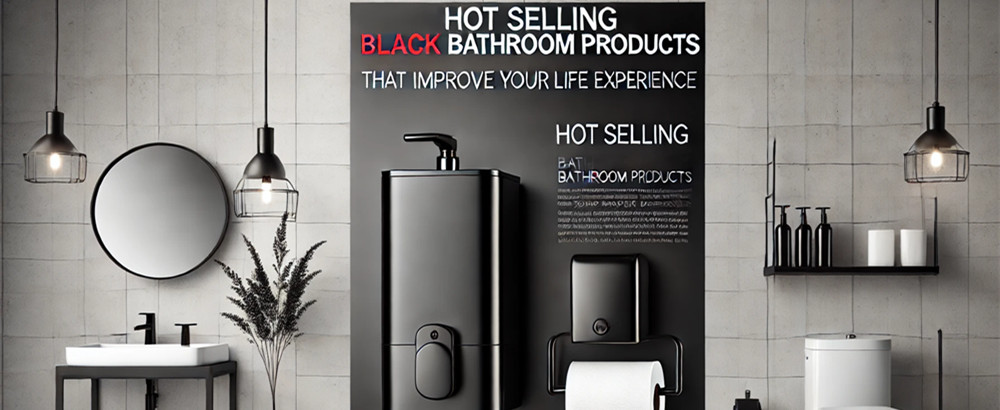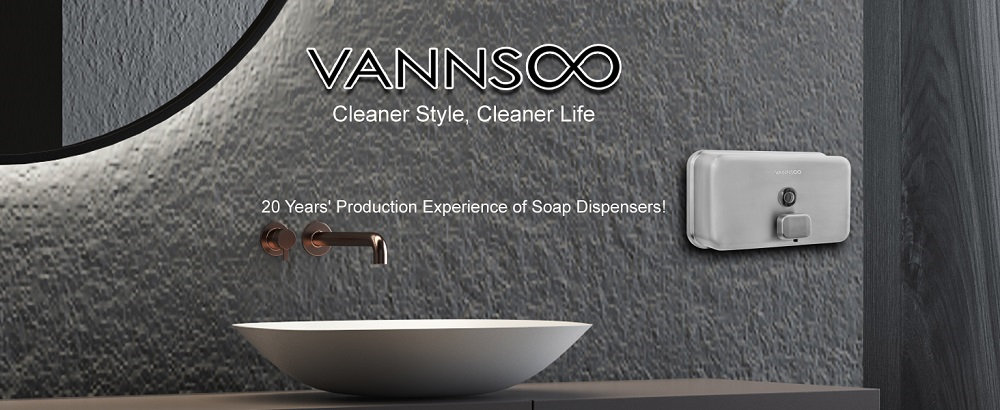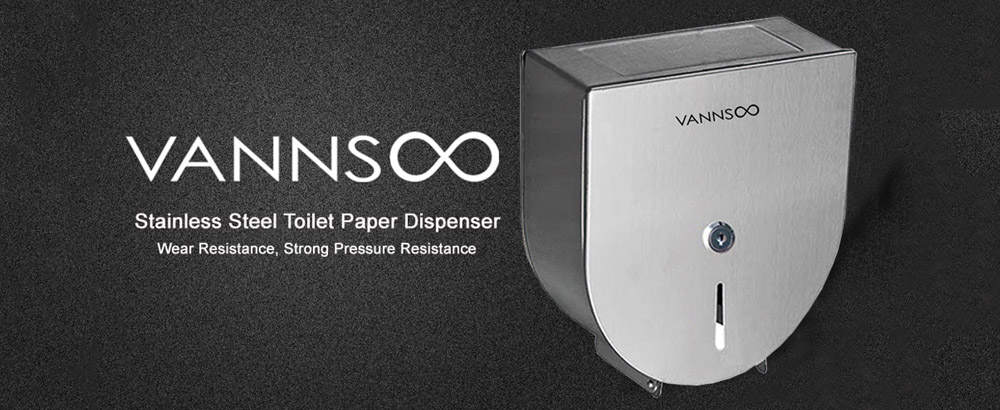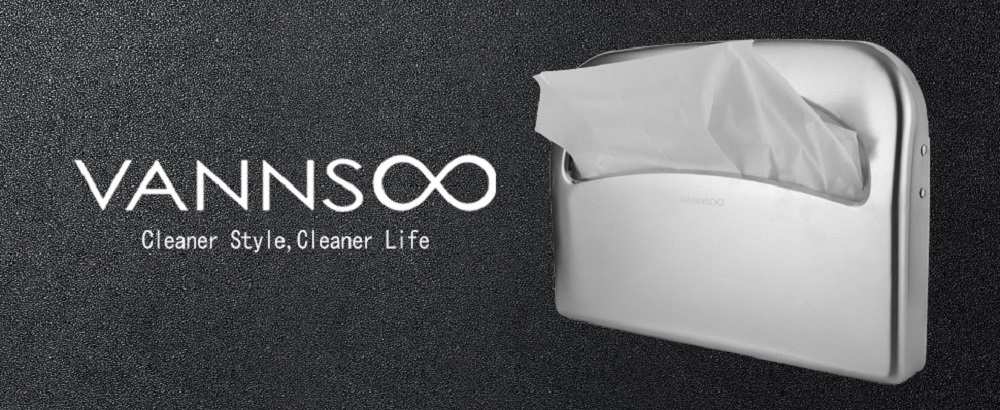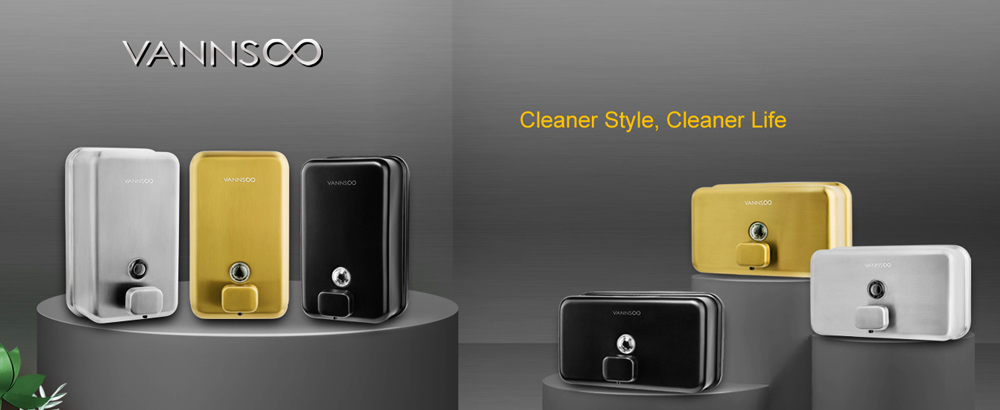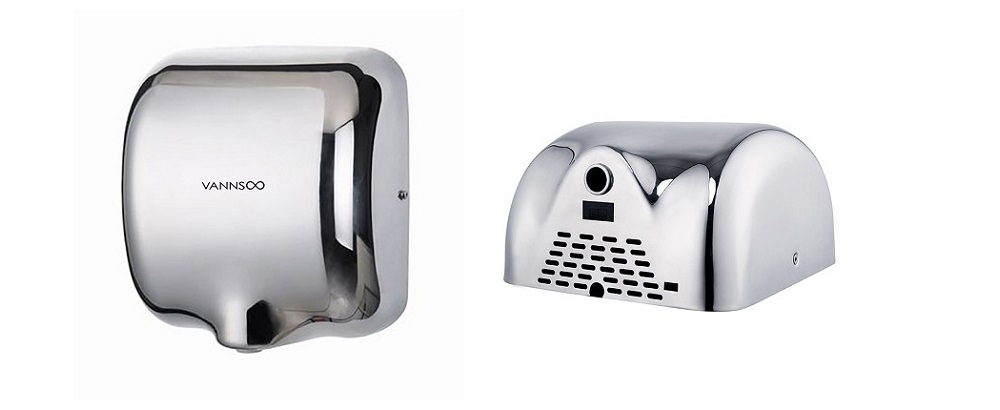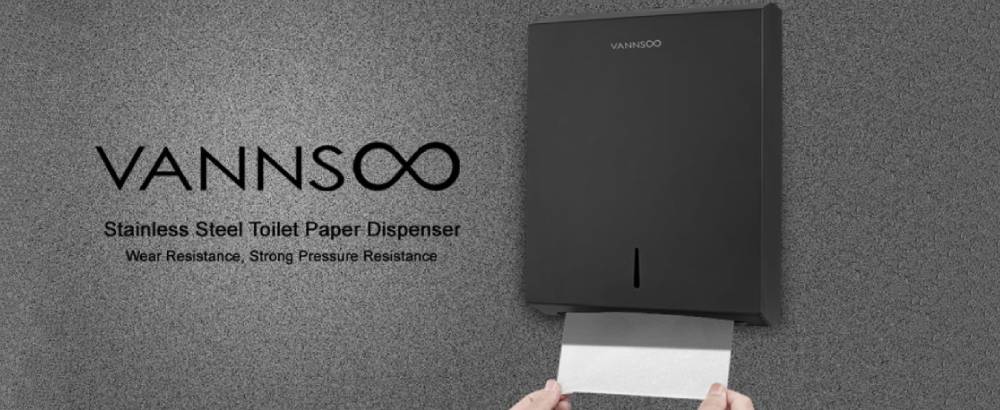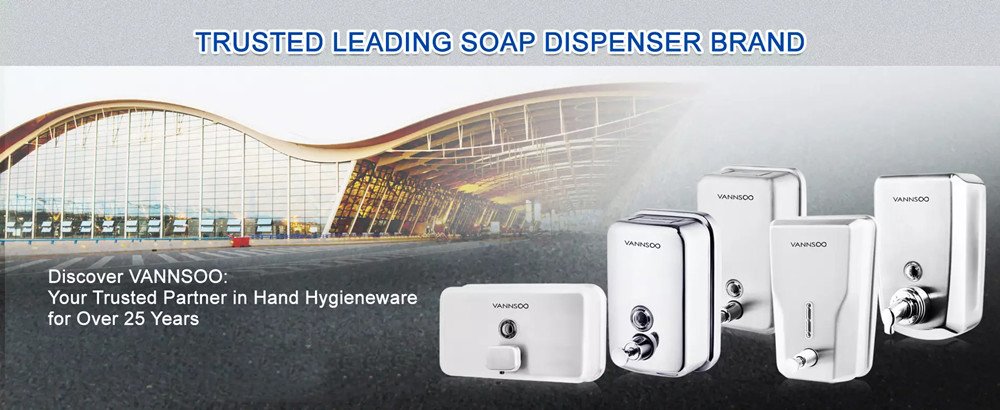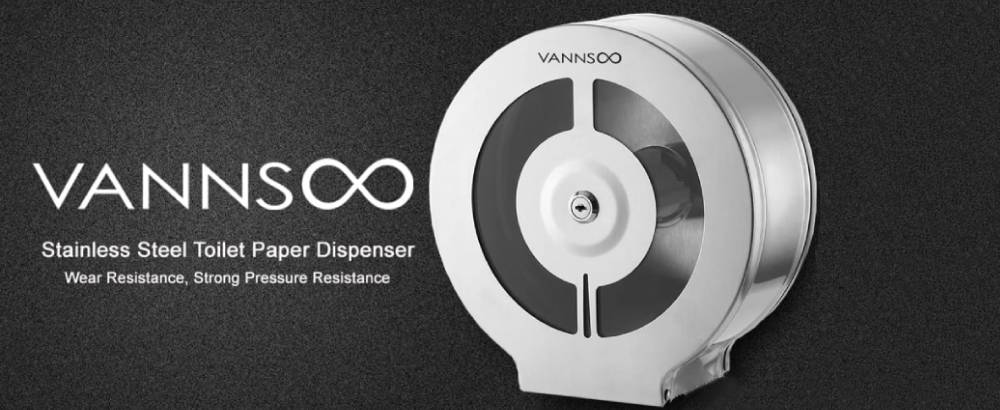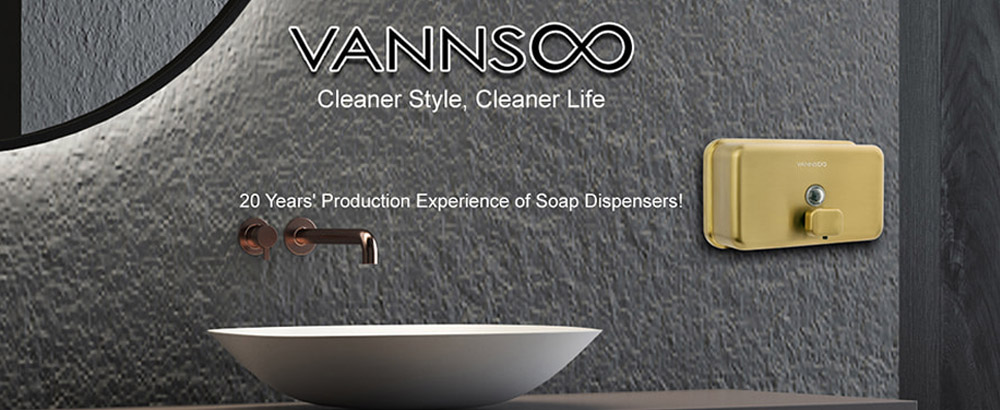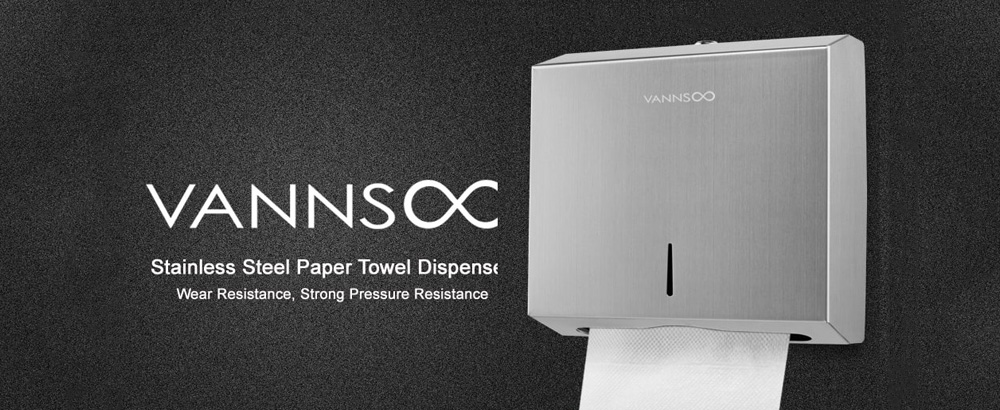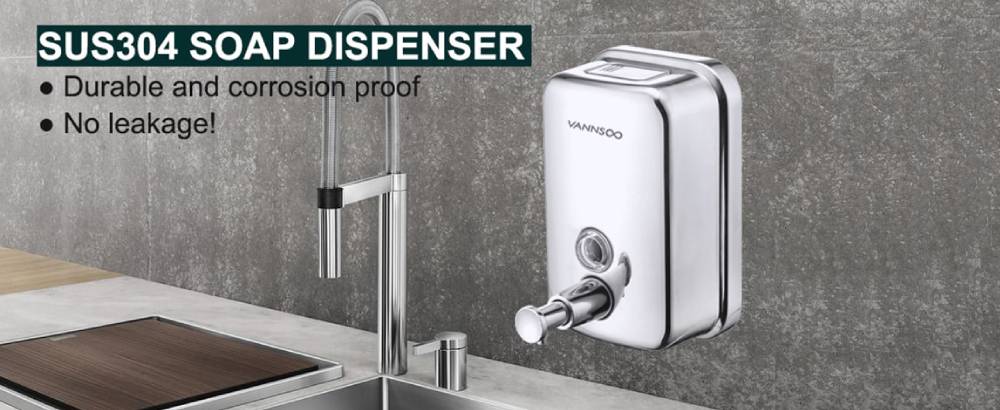Common Issues with Bathroom Soap Dispensers and How to Fix Them
Jan 09, 2025
A bathroom soap dispenser is a must-have for maintaining hygiene and convenience, especially in high-traffic areas. However, even the most well-designed dispensers can encounter issues over time. As a manufacturer committed to delivering durable and reliable soap dispensers, we understand that problems like leaks, clogged nozzles, and soap not dispensing can be frustrating. Here, we’ll dive into the common issues people face with their bathroom soap dispensers and provide practical solutions to get your dispenser working smoothly again.
Soap Dispenser Leaks: What Causes Leaks and How to Prevent Them
Leaks are one of the most common complaints we hear about soap dispensers, but they’re also one of the easiest issues to address. A leaking dispenser can create a mess and waste soap, which is both inconvenient and costly.
Common Causes of Soap Dispenser Leaks:
Worn-Out Seals or Gaskets: Over time, the rubber seals that prevent leaks can wear out or degrade, especially in automatic or touchless dispensers.
Overfilled Dispensers: If the soap container is filled too much, it can cause pressure to build up, leading to leaks around the dispensing nozzle.
Cracked or Damaged Body: If the dispenser’s body is cracked or damaged from drops or pressure, soap can escape from unexpected areas.
Loose Connections: Loose tubing or fittings connecting the soap container to the pump mechanism can lead to leaks.
How to Prevent Leaks:
Regularly Check Seals and Gaskets: As part of your routine maintenance, check the seals around the soap dispenser and replace them if they appear worn or damaged. This is particularly important for touchless dispensers, which have multiple parts that can wear over time.
Refill Carefully: Avoid overfilling the dispenser. Leave a small space at the top of the container to allow for air circulation and prevent soap from spilling out.
Inspect for Cracks: Look over the dispenser for cracks or signs of damage. If the dispenser body is cracked, it may be time to replace it.
Tighten Connections: If you notice leaks around the soap tubing, check and tighten any loose connections. Make sure everything is securely fastened to prevent leaks.
By addressing these potential causes and taking preventive measures, you can keep your soap dispenser leak-free and functioning effectively for longer.
Clogged Dispensers: How to Clean Clogged Nozzles or Pumps
A clogged soap dispenser is a common frustration, especially with thicker soaps or those with added moisturizers. Over time, soap residue can build up in the nozzle or pump mechanism, preventing it from dispensing properly.
Common Causes of Clogs:
Soap Residue Build-Up: Soap, especially foaming soap or thicker liquid soap, can leave behind a residue that clogs the nozzle or the pump mechanism.
Hard Water Deposits: In areas with hard water, mineral deposits can accumulate inside the dispenser, causing it to clog.
Using the Wrong Type of Soap: Some soaps are too thick or have additives that can contribute to clogging, especially if the dispenser is not designed for such soap.
How to Clean and Fix Clogged Dispensers:
Disassemble the Pump Mechanism: Carefully take apart the dispenser. Remove the pump and nozzle, if possible, and wash them in warm soapy water. Let the parts soak for a few minutes to loosen any soap residue.
Use Vinegar for Mineral Deposits: If you live in an area with hard water, mineral deposits may have built up inside the dispenser. To clear this, soak the affected parts in a mixture of white vinegar and water for about 30 minutes. The vinegar will dissolve the mineral deposits, making it easier to clean the parts.
Flush the System: After cleaning the nozzle and pump, reassemble the dispenser and flush it with warm water to ensure any remaining debris or residue is cleared.
Switch to a Thinner Soap: If thick soap is clogging the dispenser, consider switching to a thinner liquid soap that is more compatible with your dispenser’s pump. Some dispensers are designed for specific soap types, so choosing the right soap can prevent future clogs.
Regular maintenance is key to avoiding clogs and ensuring your soap dispenser delivers a steady, smooth flow of soap every time.
Soap Not Dispensing: Troubleshooting If the Soap Isn't Coming Out, and How to Fix It
If your soap dispenser stops dispensing altogether, it’s not only frustrating but can also create an inconvenience in busy bathrooms. This issue can often be traced to a few key causes.
Common Causes of Soap Not Dispensing:
Airlocks in the Pump: Sometimes, air can get trapped in the pump mechanism, especially after the dispenser has been refilled, preventing the soap from flowing properly.
Clogged or Blocked Nozzle: Even partial clogs can slow down the flow of soap or stop it completely, especially in dispensers that use a small nozzle.
Empty Soap Container: The simplest cause of soap not dispensing is an empty container. Always check the soap level before troubleshooting further.
Weak or Dead Batteries (for Automatic Dispensers): For touchless dispensers, weak or dead batteries can prevent the dispenser from activating and dispensing soap.
How to Fix the Soap Dispenser:
Prime the Pump: If air is trapped in the pump, try priming it. This can usually be done by pressing the pump several times to force the air out of the system. For automatic dispensers, you may need to manually operate the pump until soap begins to flow.
Clear the Nozzle: If the nozzle is blocked, carefully clean it with a pin or needle to clear any obstructions.
Check the Soap Level: It may seem obvious, but always double-check that the soap container has not run dry. Refill if necessary, and ensure the soap is properly seated in the dispenser.
Replace the Batteries: For touchless dispensers, check the batteries. If they’re weak or dead, replace them with fresh ones to restore full functionality.
Clean the Pump Mechanism: If the soap is still not dispensing, it may be time to clean the entire pump system, following the same steps outlined for clogged dispensers.
By troubleshooting these common issues, you can ensure your soap dispenser is working efficiently and ready for use whenever needed.
Bathroom soap dispensers are a great addition to any bathroom, combining convenience and hygiene. However, when issues like leaks, clogs, or soap not dispensing arise, they can cause unnecessary frustration. By understanding the common causes behind these issues and following simple maintenance tips, you can easily fix the problems and extend the life of your dispenser. As a professional soap dispensers manufacturer, we ensure that our soap dispensers are designed to withstand the rigors of daily use, but with proper care and maintenance, any dispenser can continue to provide reliable service for years to come.
Read More
